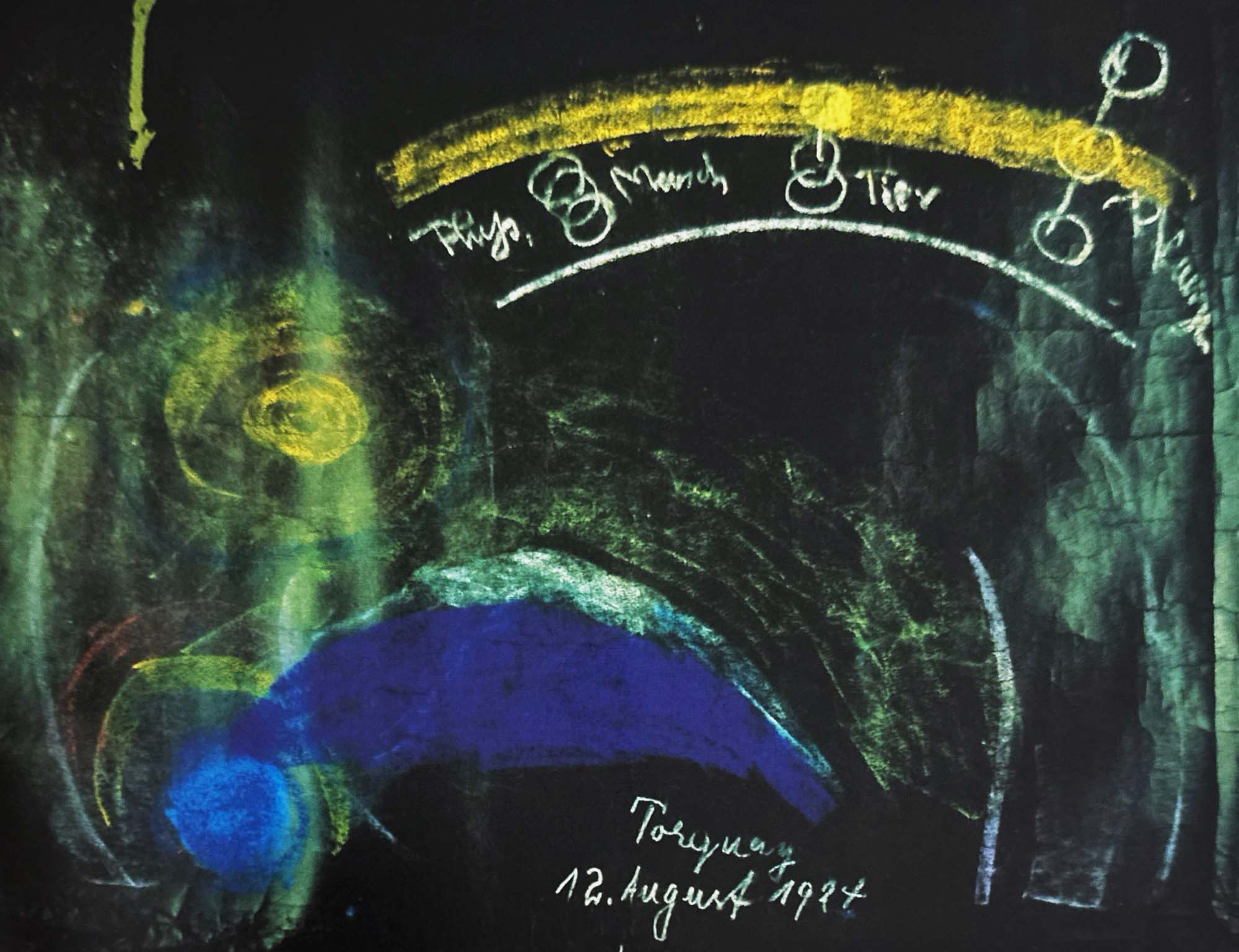
In the wood-paneled eurythmy room of the Detroit Waldorf School, my high school, a portrait of Rudolf Steiner hung, perpetually silent, as if part of the building. We felt his eyes follow each of us around as we circled, side by side, performing eurythmy exercises. We each tried to outdo the others with ironic or irreverent remarks about him, yet, over time, his presence settled within us. We rolled our teenage eyes, but slowly, Steiner’s teachings integrated into our warps and wefts.
Developed by Rudolf Steiner in 1912, eurythmy is a dance form that combines movement with sound, tone, and color. Each gesture corresponds to specific phonetic or musical elements, weaving these into complex floor patterns. Clad in flowing silk gowns over our preferred black clothing, we moved through these sequences with flow, gesture, and tranquility.
Eurythmy transcends mere aesthetics, operating on subtle energetic planes to harmonize the physical, etheric (life force), astral (emotional), and egoic (self-aware) aspects of human existence. This conscious movement art acts as a meditation in motion, bridging inner and outer worlds. Through its practice, participants experience themselves as microcosms of the universe, attuning to elemental forces and life’s interwoven rhythms. There is curative Eurythmy for ailments as well.
In 2013, during a visit to the Venice Biennale, I was surprised to encounter Steiner’s work again—his blackboard drawings on display at the Giardini Pavilion. These are not part of the art market and are held in Switzerland. Seeing his intricate visual meditations on cosmic and spiritual themes revealed how much depth there was to be discovered within his vast body of work—over 330 books, originally written in dense, complex German.

Steiner is best known for founding the Waldorf educational system in 1919. Created for factory workers’ children at the Waldorf-Astoria Cigarette Factory in Stuttgart, the system has since grown to encompass over 1,000 independent schools across 60 countries. But Steiner’s ambitions extended far beyond education and dance.
Central to Steiner’s worldview was the idea that modern humanity had become disconnected from spiritual realities, entangled in materialism. He believed that ancient humans had once participated in the world’s spiritual processes through a dreamlike consciousness. Recovering this lost perception, he argued, required training the human mind to rise above its fixation on matter and reconnect with higher, spiritual truths.
Steiner’s approach to human development was based on his concept of “threefoldness.” He posited the soul consists of three faculties, thinking, feeling, and willing, all mirrored in the physical body by the head, circulatory system, and metabolic-limb system, respectively. Crucially, Steiner’s concern was not limited to homo sapiens alone but extended to all sentient beings. He was an early believer Western civilization would ultimately harm itself and the planet unless it acknowledged the unity between the spiritual and physical dimensions of worlds.

Particularly salient to Green Religion are Steiner’s insights on agriculture, known today as Biodynamics. At a time when industrial agriculture was embracing synthetic fertilizers and pesticides, Steiner warned that these practices would degrade soil health, weaken plants and animals, and strip food of its life-giving vitality. In response to farmers seeking guidance in their failing crops, Steiner held a series of lectures in June 1924, which became the foundation of the biodynamic movement. These teachings were later compiled in his book Agriculture.
At the heart of biodynamics is the idea of the farm as a self. Steiner also introduced homeopathic agricultural preparations—treatments for soil, plants, and compost to enhance the farm’s innate vitality and resilience. He emphasized the importance of cosmic rhythms, such as lunar and planetary cycles, in maintaining ecological harmony.
Steiner’s wellness solutions in agriculture laid the groundwork for a regenerative movement. His work that continues to grow in relevance. His teachings remind us that in a fragmented world, we must strive to perceive the interconnected whole—within ourselves, within nature, and within the cosmos.
In the 1980s, biodynamic farmers in the northeastern United States further extended Steiner’s influence by pioneering the concept of Community Supported Agriculture (CSA), a model now embraced by thousands of farms across North America.
We can again have plants, i.e. food, without pesticides nor genetic manipulation. Animals in the wild may not encounter poison, creating an unintended and shortsighted problem. Science has revealed some of her secrets. They are essential to our health and wellbeing as a society, to all sentient beings.
Akin to Green Religion’s intention of merging spirituality and environmentalism, Steiner too believed in climate-positive actions in in the arts, medicine, and the whole of society.

Copyright © Green Religion
Made with ♥ in Miami by Fulano
Quarterly, explore the growing space of Green Religion where stories connect us, creativity leads to awareness, and climate justice remains at the core.
We value your privacy. Your email address and personal information will be used solely for sending updates from Green Religion. We do not share your information with outside parties, and you can unsubscribe at any time.